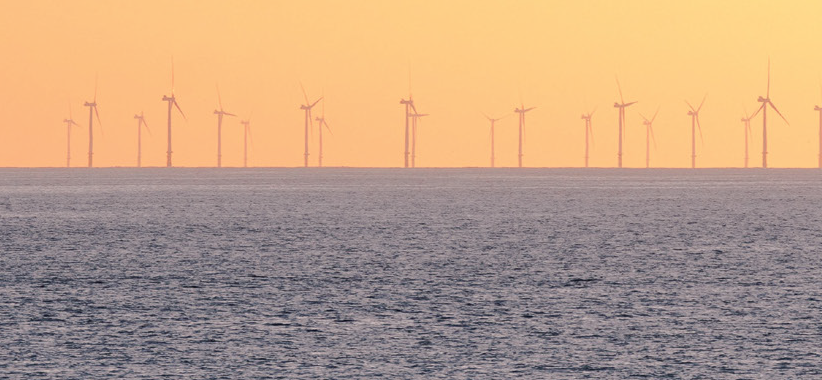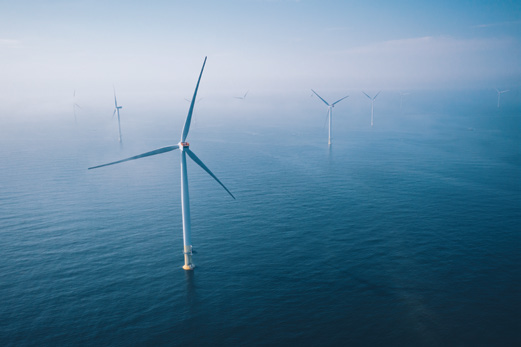What is offshore wind energy?
Offshore wind energy involves generating electricity from wind turbines in the ocean. These turbines capture wind energy and convert it into electricity, which is then transmitted to the shore via underwater (subsea) cables. Offshore wind energy has been used around the world since 1991 and the amount of offshore wind increases globally year on year.
Will offshore wind turbines create noise that can be heard on the beach?
The sound of offshore wind turbines is unlikely to be audible or distinguishable from background ocean noise at the shore due to the distances of the turbines from the shoreline.
Although offshore wind turbines are likely to be significantly larger than land-based turbines, their distance from the shore, together with the background noise of the wind and waves, means they are not expected to be heard from land.
How far from the coastline are offshore wind farms?
All offshore wind farm locations are various distances from the shore. In Australia, the declared offshore wind zones set the minimum distance from the coastline for any projects.
Community feedback on visual impacts was considered by the Federal Minister for Climate Change and Energy in deciding the distance from shore of the offshore wind zones. The exact distance of wind turbines will vary depending on specific project plans and local conditions but will not be closer to land than the distances determined in the declared areas.
The distances from the nearest shorelines to the declared offshore wind zones in Australia are:
Southern Ocean, Victoria:
at least 15km from the shore1
Gippsland, Victoria:
at least 10km from shore2
Hunter, New South Wales:
at least 20km from the shore in the north and more than 35km from the shore in the south3
Bunbury, Western Australia:
at least 30km from the shore4
Illawarra, New South Wales:
at least 20km from the shore5
Northern Tasmania:
at least 30km from shore6
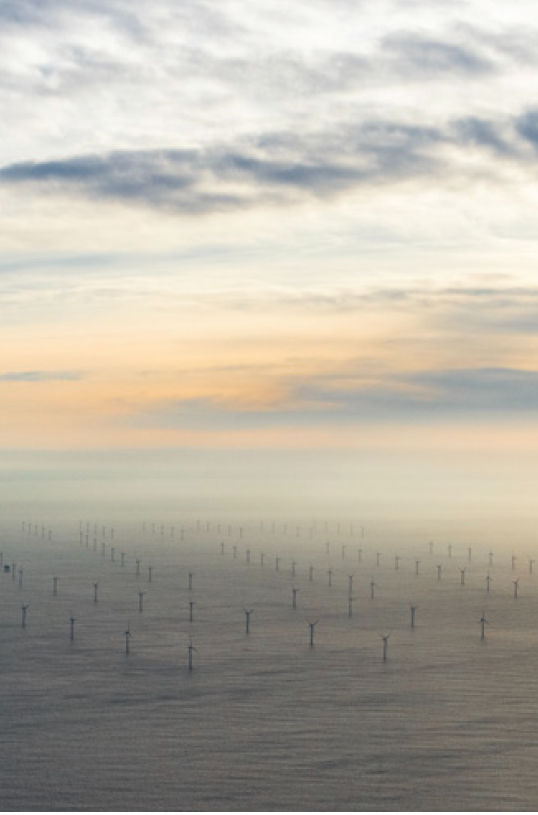
1 Southern Ocean region off Victoria, declared offshore wind area - DCCEEW
2 Wind turbine visualisations
3 Hunter region declared suitable for offshore wind - DCCEEW
4 Indian Ocean off the Bunbury region, Western Australia declared offshore wind area - DCCEEW
5 Illawarra, NSW declared offshore wind area - DCCEEW
6 Bass Strait, Northern Tasmania proposed offshore wind area - DCCEEW
Will offshore wind turbines be visible from the coastline?
The visibility of turbines depends on their size, distance from shore, and weather conditions.7 While the visual impact of offshore wind turbines may be minimal when viewed from the beach, they may be more noticeable from elevated viewpoints along the coast.
The Victorian Government has released a series of digital offshore wind turbine visualisations representing what an offshore wind farm might look like at varying distances from the Gippsland coast. The Department of Climate Change, Energy, the Environment and Water has also released further visualisations for the Illawarra, Northern Tasmania and Bunbury zones.
Wind turbine visualisations - Woodside Beach, Gippsland
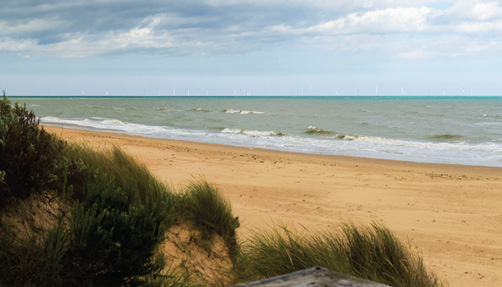
Illustrative view of turbines - 10km from Woodside Beach
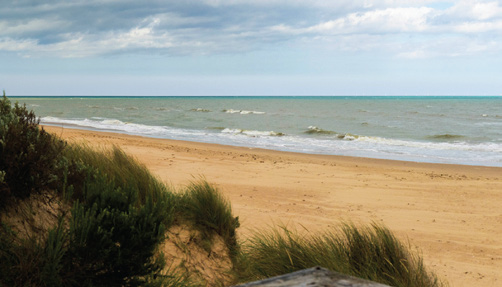
Illustrative view of turbines - 30km from Woodside Beach
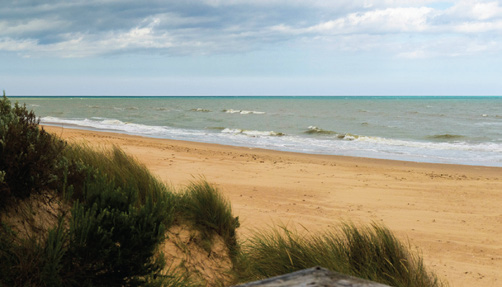
Illustrative view of turbines - 60km from Woodside Beach
Does offshore wind impact the waves and currents?
Offshore wind farms do not significantly affect waves and currents. Any impact on ocean dynamics decreases with distance and is unlikely to be noticeable at the shore.8
Can offshore wind farms affect coastal tourism?
Given the distances from shore, it is not expected that offshore wind farms will pose an impact on the visual amenity of a beach or impact on local tourism. Offshore wind farms will, however, present a unique opportunity for the growing market of eco-tourism, offering visitors a chance to learn about renewable energy and marine ecosystems through guided tours, viewing platforms and educational centres.9 Globally, offshore wind farms have become popular tourist attractions, stimulating regional economies and providing opportunities for locals and visitors to get up close with the technology.10
Cables that connect offshore wind farms to onshore substations are underground
Are offshore turbines visible at night?
Offshore turbines may be visible at night due to required aviation safety lights, just like lighting on ships and boats. These lights could appear as a line across the horizon, especially in darker conditions. However, their impact is generally minimised by the distance from shore and prevailing weather conditions.
How does offshore wind impact the beach experience?
Offshore wind farms are unlikely to impact the beach experience. Beachgoers can swim and utilise the beach, as usual, and there will be no cables on the sand. Cables that connect offshore wind farms to onshore substations are underground.11 Due to the distance of the offshore wind farms from the beach, swell and waves are unlikely to be affected.
Will offshore wind impact water sports?
Offshore wind farms are unlikely to significantly impact water sports, including surfing. The turbines will be far enough offshore to minimise any effects on wind patterns near the shore. Offshore wind farms are not expected to impact surf conditions either, as their effects on wave generation are minimal. Research by the Technical University of Denmark found the presence of offshore wind turbines does not significantly alter wave height or direction.12
8 J V Berkel et al 2020, 'The Effects of Offshore Wind Farms on Hydrodynamics and Implications for Fishes', Oceanography, Volume 33, No. 4, Pages 108 - 117
9 Eco-tourism: https://www.dcceew.gov.au/energy/renewable/offshore-wind/building-offshore-wind-industry
11 Beach cables: https://www.dcceew.gov.au/energy/renewable/offshore-wind/offshore-wind-facts#there-wont-be-cables-running-along-the-beach
12 Impact of an offshore wind farm on wave conditions and shoreline development
13 Brochure - Offshore renewables and interactions with fisheries - June 2023.pdf
14 Climate change | Australia state of the environment 2021
Will offshore wind farms interfere with recreational boating or fishing?
During construction and maintenance, recreational boating access may be restricted to help manage public safety and protect infrastructure from damage. At other times, general vessel access will not be restricted; however, certain activities may be limited if they pose a risk to the safety of recreational boat users or to the operation of the wind farm. Ongoing consultation between industry and the fishing and boating communities will take place to determine equitable outcomes for all ocean users.
How will offshore wind impact commercial fishing?
Offshore wind farms can coexist with other activities like commercial fishing. Internationally, fishing continues around operational wind farms. Offshore wind farms can also create artificial reefs, which can improve fishing experiences.
Legislation allows for safety and protection zones around offshore wind farms to help manage safety and protect infrastructure. The specifics of these zones will be decided for each project by the Offshore Infrastructure Regulator. Fishing and offshore wind farms can coexist if safety and infrastructure integrity can be maintained.13
Can offshore wind farms cause erosion of beaches?
Offshore wind farms are unlikely to cause erosion of Australian beaches. Even during severe storms, waves typically only affect the seabed up to about a kilometre offshore, far closer than where wind turbines would be. Human-caused climate change is the main contributor to erosion, as rising sea levels and increased storm intensity accelerate the loss of coastal land. Renewable energy, such as offshore wind, is the most effective tool to help combat climate change.14
Top 5 offshore wind facts
Offshore ocean winds are strong and consistent
complementing onshore renewable resources and diversifying Australia's energy mix
Australia has world class offshore wind resources
with wind speeds and ocean depths comparable to Europe's most advanced offshore wind areas
Renewable energy, such as offshore wind, is the most effective tool to protect our marine life from the effects of climate change
The Australian offshore wind industry is already underway
with 25 gigawatts of feasibility licences awarded across 12 projects in the Gippsland offshore wind area, enough to power 13.5 million Australian homes for a year
Offshore wind energy will generate electricity close to where it’s needed
87% of Australians live within 50km of the ocean, requiring less new transmission to be built
